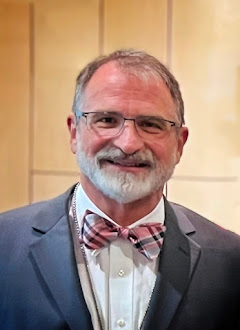“Peace at Last”
Isaiah 11:1-10; Romans 15:4-13; Matthew 3:1-13[1]
We all have some sort of “icon” for
Unfortunately, there’s precious little peace on this earth. You don’t have to talk about wars abroad—there are car-jackings in
The lack of peace in this world is one of the major reasons why our Jewish friends and neighbors have not accepted Jesus as their Messiah. As the prophet Isaiah tells us, when the Messiah comes he will bring with him the justice that makes for peace—he will defend the cause of the poor and needy (Isaiah 11:4). The vision of peace that Isaiah describes is so powerful that it transforms all life—even so-called “natural enemies” in the animal world will live together in peace. In similar fashion, this coming one would be the “signal for the people of all nations to come together” (Isaiah 11:10, CEV). It’s unfortunate that we’re a long way from that kind of world. These days, we even fight when we award the Nobel prize in recognition of peace-making efforts!
I think that it’s important to view the lack of peace in our world as an important dimension to our celebration of advent. Advent is a time of waiting for the coming one. What that means is that there is a future dimension to faith—it’s here but not completely. Jesus is the one who came to bring the justice of God that restores all things and creates true peace in this world. But the work has only begun in his day. We still look forward to the time when he will complete the work of peace. In the meanwhile, there are “signs” of the peace of
I think a striking illustration of that kind of “hidden” peace can be found in a 2003 film called Saints and Soldiers. It’s a story based on actual events—the massacre of American prisoners of war near
What those G.I.’s didn’t understand was that their friendship was a sign of the peace that
The lack of peace around us does not rule out the promise that
The hope of advent is that in Jesus the
[1] © 2007 Alan Brehm. A sermon preached by
[2] Jürgen Moltmann, The Church in the Power of the Spirit, 84-85, 98-99, 293.
[3] Moltmann, Church in the Power, 138, says it this way: “the church … has to see an expectant and hopeful
[4] Cf. Isa. 11:10; 40:5; see also Moltmann, Church in the Power, 77, 80, 83, 86, 93, 100, 135; cf. further, Jürgen Moltmann, “The God of Hope,” in The Gospel of Liberation, 31: “Paul sighs with the entire waiting creation. How can we then sigh only for ourselves?” Cf. Further, Karl Barth, Church Dogmatics IV.1:31.
[5] Moltmann, Church in the Power, 77, 192-93, 217-19.
[6] Moltmann, Church in the Power, 65, 83-84, 316; see further 163-189, and 282-88 for concrete implications in all aspects of life.


No comments:
Post a Comment